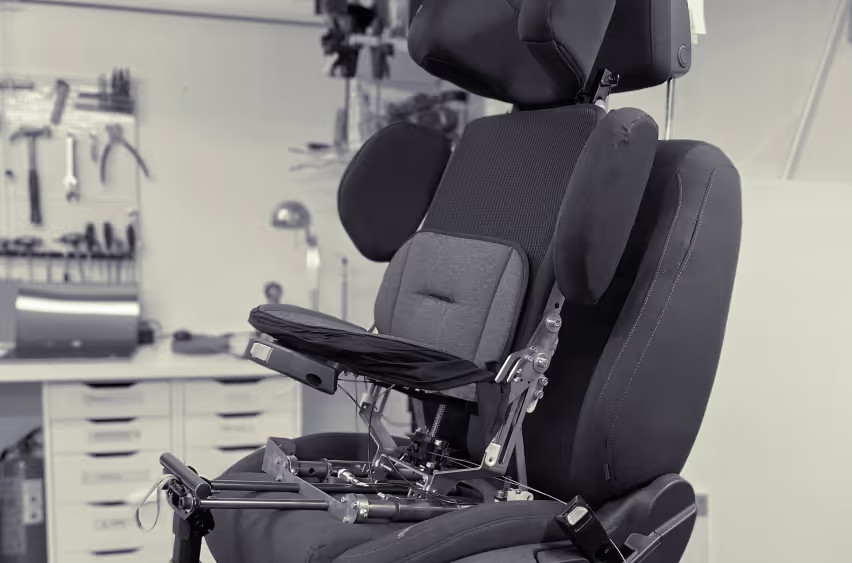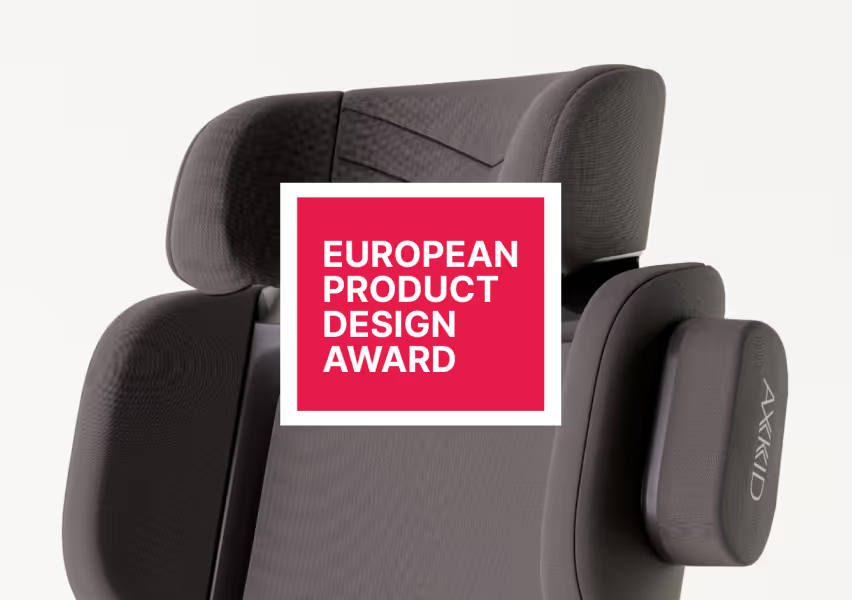AxKid
RE-THINKING FORWARD FACING CHILD CAR SEATS!

.svg)


RESEARCH
The first step of the design process is to understand, ask questions, and analyze. Through workshops, briefing sessions, discussions, and market research, a project agreement between AxKid and Cliff Design was established.
By segmenting existing products through position matrices, we defined a target group and its relation to the car seat market. The users were identified as aware consumers with a strong drive for innovation, positioning themselves as trendsetters and early adopters.
User research and clinics were conducted to confirm design directions and conclusions, ensuring that the continued process was based on real needs and value for end users, driven by insights, firsthand dialogues, and quality-based data.




STRATEGY
Once we collected input from various sources, we began consolidating everything, building a strategy anchored both internally and externally.This process ultimately created our shared design platform, which we used as a reference and a dynamic document throughout the project for all stakeholders.
Early in the project, three different target groups were identified, each with specific areas of interest in the product. For parents, the seat should simplify life and provide safety for the youngest family members. For children, it should foster development, satisfy curiosity, and provide optimal ergonomics. For resellers and ambassadors, its identity should be strong enough to generate interest and clearly communicate its unique selling points (USPs).







.svg)


IDEATION & CONCEPT
Once the project strategy was set, the focus shifted to ideation and conceptualization. With a clear and well-defined theoretical framework, the exploration phase emphasized creativity and diversity.
The initial ideas revolved around usability improvements, such as enhancing in-car installation and improving the child’s experience. Soon, we started placing greater emphasis on the evolution and growth of children. Why don’t car seats adapt to this fundamental principle?
How would a seat look if it adjusted and grew alongside the child? And how would the dynamics within the car change if, regardless of the child’s age, their head and sight were always at the same height?




Cliff Design's progressive user research, creative methods, and ability to align all stakeholders significantly enhanced our strategic and innovative product development. Their high-level design expertise was fundamental to the success of the award-winning Axkid Up. Johan Andersson, Technical Manager at Axkid




Refinement
Once the concept was established, the process shifted toward convergence—moving toward realization and production.We collaborated closely with AxKid’s talented engineering team to ensure the seat’s safety and usability while preserving the design vision and concept foundation.
Every detail mattered—from the texture of plastic panels to the seamless transitions between parts and materials. Simple and clear graphics reinforce the product’s identity, while design cues and semantics ensure clarity. The quality had to meet the high expectations of a demanding market position.







.svg)


Details and final result
Pushing the boundaries of innovation for the benefit of users—down to each component of this seat—was our main objective! From the first step of our research to the final presentation, we worked hand in hand with AxKid, drastically improving the car seat experience for both children and parents.
And because the experience doesn’t stop with the product itself, we also proposed a collection of accessories to expand functionality and enhance the in-car experience for children.







Trust the process!
The AxKid Up! has received highly positive feedback from users and associations. We are proud that this collaboration was a success, earning several awards, including the European Product Design Award in the Families & Kids / Safety: Car Seats category.
This proves that when collaboration is built on mutual trust and respect, great things can happen. That’s the design process!
Thank you, AxKid, for a great collaboration!














